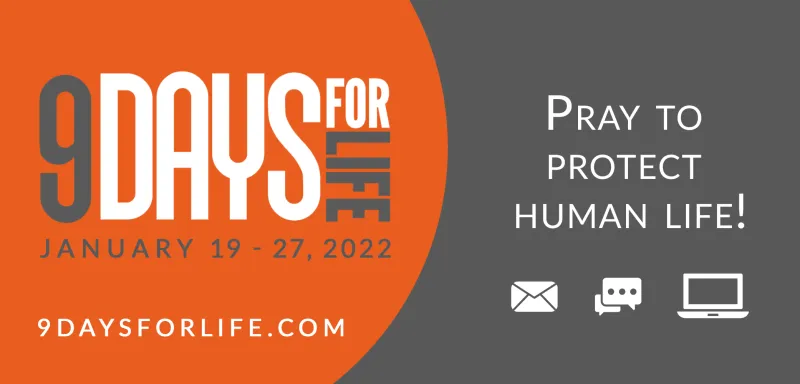
Washington D.C., Jan 14, 2022 / 16:01 pm (CNA).
This year marks the 10th anniversary of the United States Conference of Catholic Bishops’ “9 Days for Life”, as the bishops once again encourage everyone to pray for an end to abortion.
“This pro-life novena is an opportunity for recollection and reparation in observation of the anniversary of Roe v. Wade—the Supreme Court decision that made abortion legal throughout the United States,” said a Jan. 12 statement from the USCCB.
The novena begins Jan. 19 and is sponsored by the conference’s Committee on Pro-Life Activities. The first 9 Days for Life novena was prayed in 2013, in observance of the 40th anniversary of the Supreme Court decision in Roe v. Wade. In the decision, the justices found that a woman had a legal right to an abortion throughout the entirety of her pregnancy.
Each day, participants in the novena will pray for a specific intention related to ending abortion, and will be provided with “a reflection, educational information, and suggested daily actions.”
Jan. 22 is the USCCB’s annual “Day of Prayer for the Legal Protection of Unborn Children.” That date marks the anniversary of the Supreme Court’s decision in the case Roe v. Wade, and is a day of penance in the dioceses of the United States.
Those seeking to participate in the novena can sign up for text or email reminders at 9daysforlife.com. Participants are encouraged to use the hashtag #9DaysForLife if they post about the novena on social media.
If you value the news and views Catholic World Report provides, please consider donating to support our efforts. Your contribution will help us continue to make CWR available to all readers worldwide for free, without a subscription. Thank you for your generosity!
Click here for more information on donating to CWR. Click here to sign up for our newsletter.




All well and good. Hopefully, the outcome will be decisive action on Eucharist coherence for Catholic members of Congress. Our lives, our chosen actions, most especially for those who wield the authority witness to the truth of our prayers.